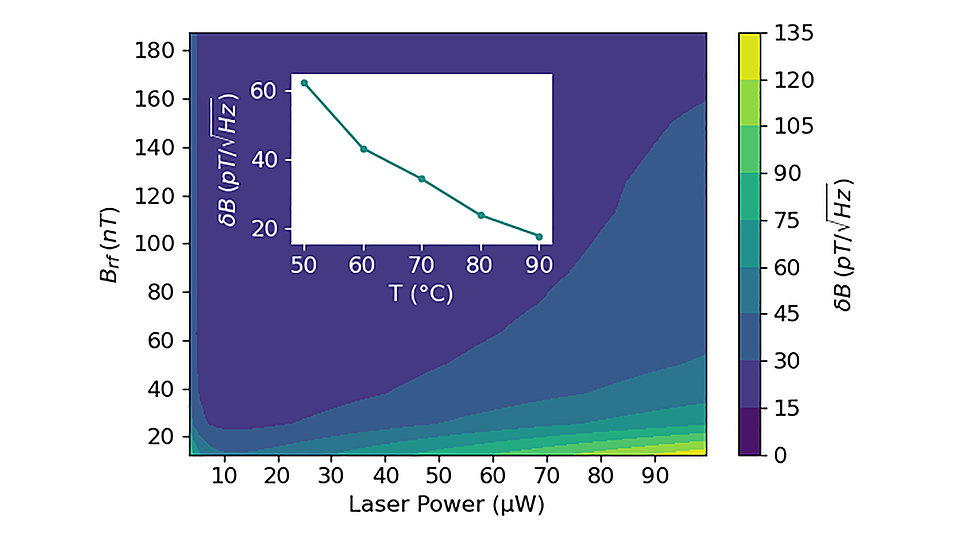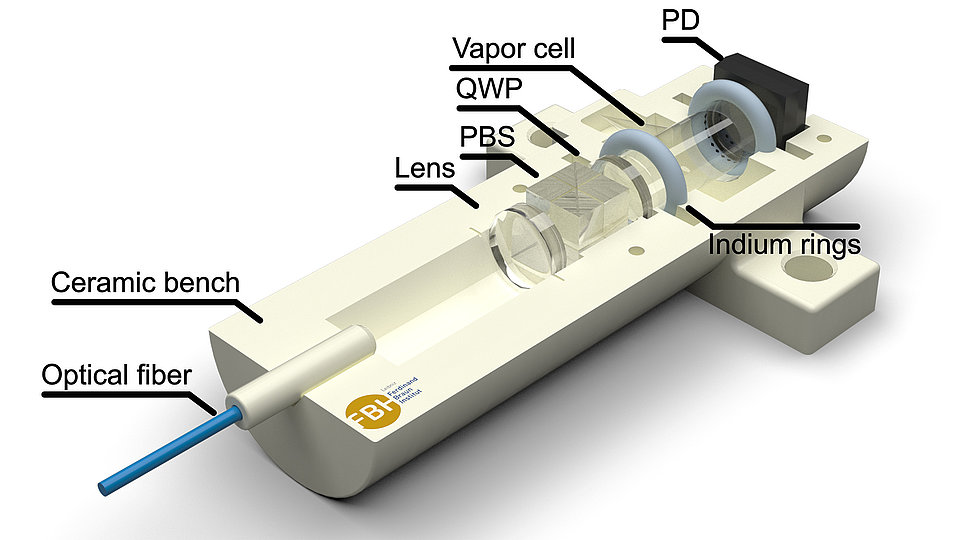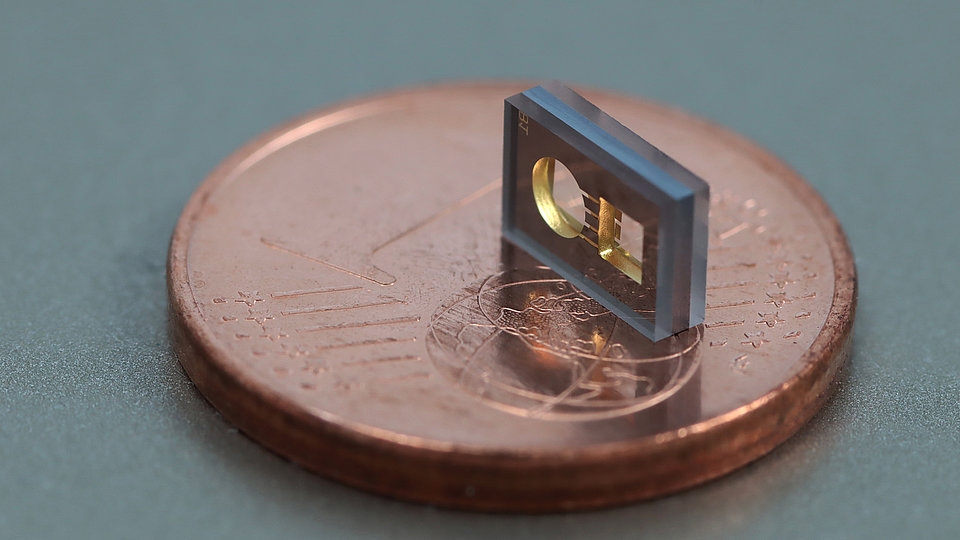Towards a portable and robust optically pumped magnetometer for biomedical applications in magnetomyography
Fig. 1: Dependence of the lab-scale OPM sensitivity on operational parameters at a temperature of 50 °C. Inset: Temperature dependence at a laser power of 80 µW and a magnetic field amplitude of 25 nT.
Fig. 2: Anticipated design of a compact OPM demonstrator. Physics package consisting of collimating lens, polarizing beam splitter (PBS), quarter-wave plate (QWP), vapor cell, and photodetector (PD) to be assembled on a 3D-printed ceramic bench.
Atomic quantum sensors are based on the principles of quantum mechanics and offer unparalleled precision and sensitivity in measuring physical quantities. These sensors have found diverse applications in navigation, time and temperature measurements, and the detection of gravitational and electromagnetic fields. MyoQuant is a joint project between FBH and Physikalisch-Technische Bundesanstalt (PTB), Berlin, supported by medical partners from the Children’s Hospital of Eastern Switzerland, Sankt Gallen and Hertie-Institute for Clinical Brain Research of the University of Tübingen. The aim is to develop a portable, optically pumped magnetometer (OPM) for magnetomyography (MMG), a non-invasive method to measure human muscle activity. To achieve medical relevance, the sensor needs to reach sensitivities in the sub-pT range under conditions that are compatible with the clinical environment.
In our laboratory setup, a frequency-stabilized laser interacts with the cesium atoms contained within a heated vapor cell with buffer gas. The cell is surrounded by a coil system to produce a controlled RF magnetic field. By analyzing the transmitted laser beam's polarization components, changes in the ambient magnetic field are detected. We have conducted a systematic in-depth study on the operational parameters of our OPM setup to pinpoint optimal working conditions for the anticipated portable magnetic field probe.
In particular, we have investigated the effect of several influencing factors on the sensitivity of the OPM: the vapor temperature, which affects the atomic density, the amplitude of the RF magnetic field, which is responsible for driving the resonance, and the laser power governing the optical pumping process. The contour plot in Fig. 1 shows the dependence of the sensitivity on the optical power and the amplitude of the RF field at a fixed temperature of 50 °C. By carefully tweaking these parameters, we achieved a sensitivity of 6 pT/√Hz at a bandwidth of 580 Hz. We observed that the optimal RF field amplitude for resonant light is related to the total relaxation rate of the sensitive spin ensemble, while the optimal laser power depends on the optical absorption saturation.
Towards miniaturization, we are working on a micro-integrated sensor head. The physics package will be assembled on a 3D-printed ceramic bench as depicted in Fig. 2. Once the compact demonstrator is operable, it will undergo testing on a muscle phantom within a magnetically shielded environment. Additionally, a gradiometric sensor configuration for applications in unshielded settings is to be tested. Furthermore, future sensor iterations will feature in-house fabricated MEMS vapor cells as shown in Fig. 3. To this end, deep reactive-ion etching and wafer bonding techniques are currently being optimized for wafer-scale MEMS alkali vapor cell microfabrication.
This work is supported by the German Space Agency DLR with funds provided by the Federal Ministry for Economic Affairs and Climate Action (BMWK) under grant numbers DLR 50WM2168 and 50WM2169.


